At this point in the pandemic, you’ve likely seen how stay-at-home orders to limit the spread of the coronavirus have led to a gardening boom. The desire to grow one’s own food has nurseries across the nation—deemed essential businesses that can stay open—bombarded by swelling demand. Credit the increased green-thumb interest to extra at-home hours needed to cultivate gardens. That time is compounded by a drop in grocery shopping appeal, with its obvious transmission risks, mask mandates, empty shelves, and distancing guidelines. In short, food self-sufficiency is on the rise.
Apartment dwellers in urban environments might assume that this gardening resurgence does not apply to them. Little to no available outdoor space, however, does not mean you’re stuck harvesting produce from a store, and not the soil. There’s actually a good amount of food you can grow in an apartment or in the tiny confines of a balcony or patio.
Take it from Dimitri Gatanas, a nursery manager in the depths of Manhattan’s concrete jungle. Situated under a railroad track in New York City’s Spanish Harlem neighborhood, Gatanas’s Urban Garden Center has been flooded with new inquiries since the city’s stay-at-home orders began. “We’ve been overrun with vegetable, herb and seed orders,” says Gatanas. “It’s actually a little overwhelming.” Gatanas has shifted most of his sales to online and over the phone, and has deployed his staff to run a rapid delivery service to accommodate social distancing.
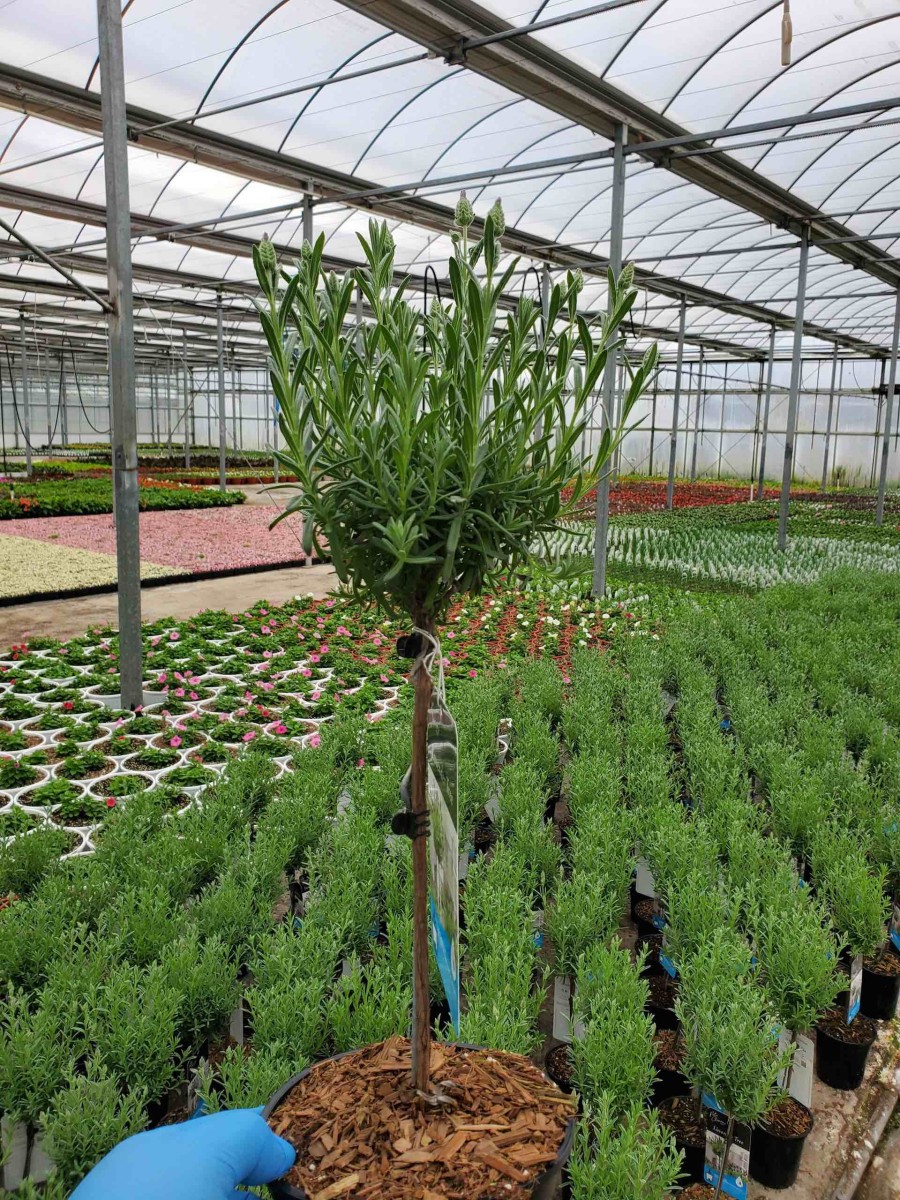
Gatanas spends a significant amount of time on the phone, coaching first-time gardeners in what to buy and how to grow it. “We want people to know they can pretty much [grow food] anywhere,” he says. The key, according to Gatanas, is setting realistic expectations and attainable goals. “No one is bypassing a supermarket doing any of this stuff,” says Gatanas. But he sees real power in growing some of one’s own food in a densely packed city, especially in a time of crisis. “I think this is more therapy, that’s what the garden has become. It’s cathartic.”
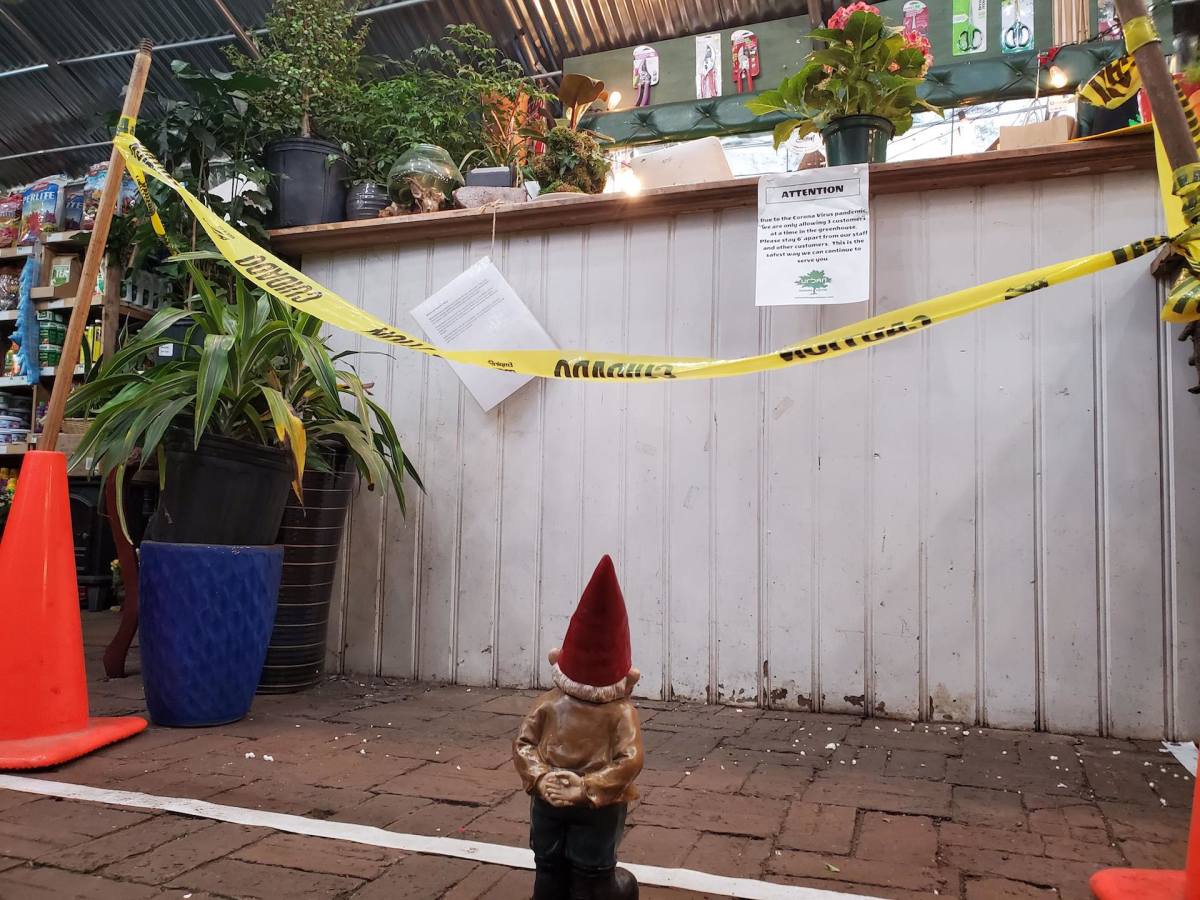
On the opposite coast, Jo Anne Trigo, of Two Dog Organic Nursery in Los Angeles, has seen business double since California issued stay-at-home orders on March 19, and has transitioned to email ordering and curbside pickup. Trigo and her husband Alejandro founded their nursery after the 2008 recession destroyed their interior design business, pushing Trigo to find respite in the soil. Having founded a business born out of economic crisis, and now supporting those in the midst of another, things have now come full circle for Trigo.
“There’s a general sense of unease,” she says, “and it’s been a mission of the nursery going back to the 2008 recession [to spread the message] that knowing how to grow some of your own food is a good life skill.”
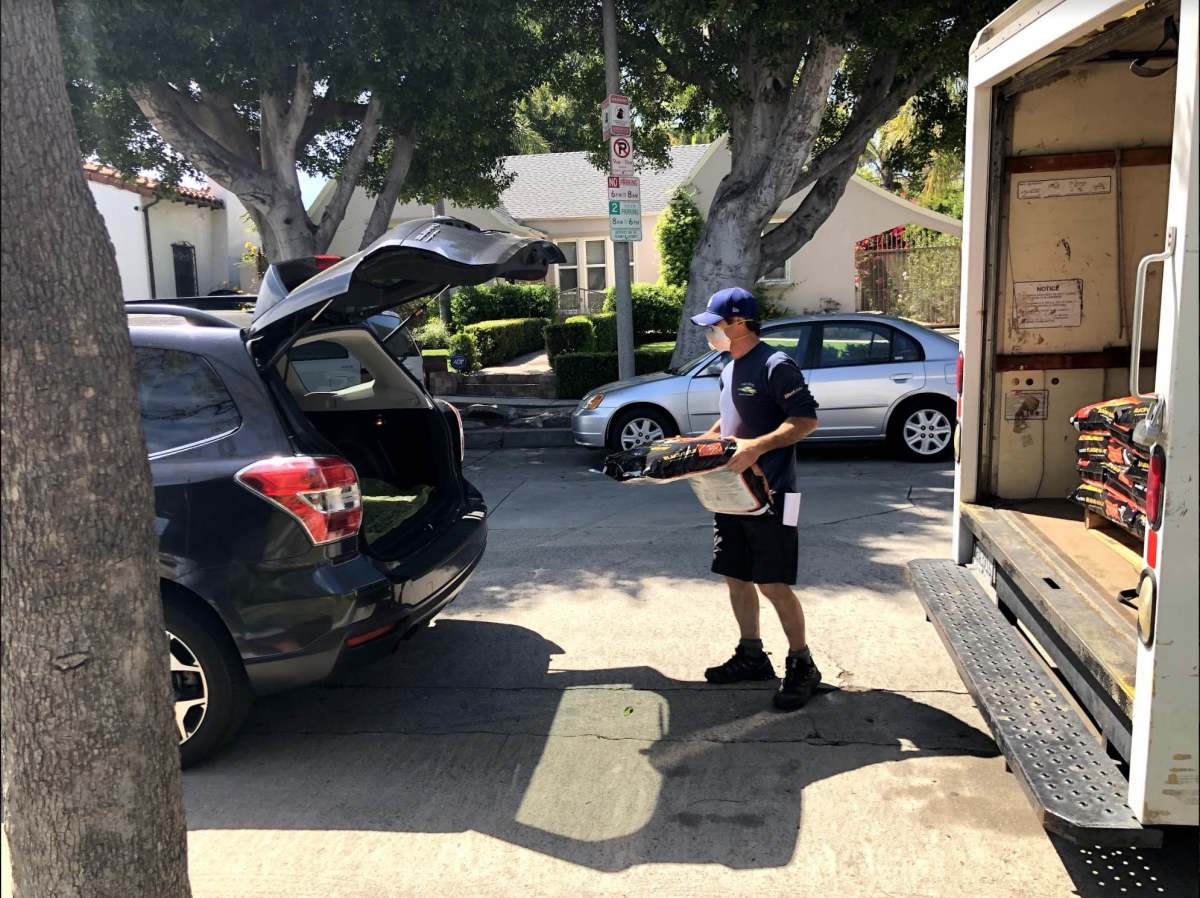
So, where to begin? Trigo tells the rush of new customers contacting her daily to start by evaluating how much light, space, and time they have. Next, pick “workhorse” plants (like herbs, leaf vegetables and high-yield fruits like strawberries and tomatoes) that are more likely to survive a novice gardener’s mistakes, and which will help minimize the discouragement of initial failure. And, Trigo advises, no matter what you’re growing or where, soil is your most important tool, so invest in a high quality, organic brand.
For those who can only grow inside, herbs are a great way to start. Plants like mint, basil, and chives can be grown in small terracotta pots and placed in a sunny windowsill, and used as garnish or seasoning, infused in teas or cocktails, blended into smoothies or pesto, etc. Excess harvest can be frozen for future use, and the woodier herbs like oregano and rosemary are perennials—meaning they’ll grow continuously or return each year if properly cared for. Gatanas recently had a customer call who had been diagnosed with COVID-19 and wanted to grow his own herbs for tea. He ordered thyme and peppermint. “He had a determination to feel better on his own, and to do it naturally,” Gatanas says.
Lettuce, spinach, arugula and microgreens can also be grown inside, if placed in a sunny area that doesn’t get too hot. For containers, Trigo swears by Earth Boxes, which she calls “the most foolproof container on the market” because of its water reservoir that prevents over watering. “Most new gardeners think more is better and drown everything,” says Trigo.
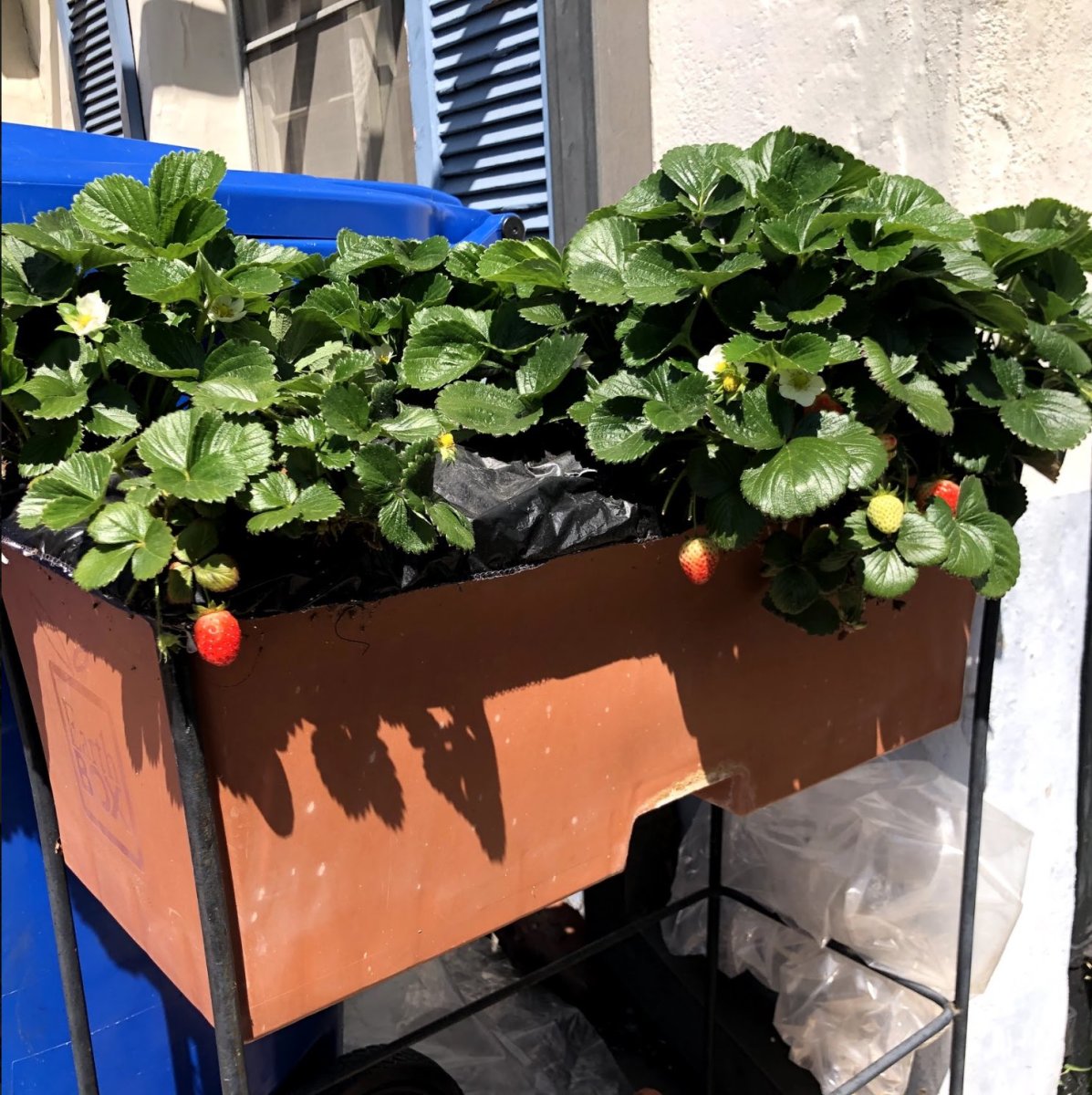
If you have an apartment balcony or small patio, choose what you grow based off how much sun your outdoor space receives. A south- or west-facing space will get more sun, making it ideal for high-producing plants, like tomatoes, green beans, cucumbers and strawberries. If your outdoor space is more shaded, go back to greens like lettuce, kale, and arugula.
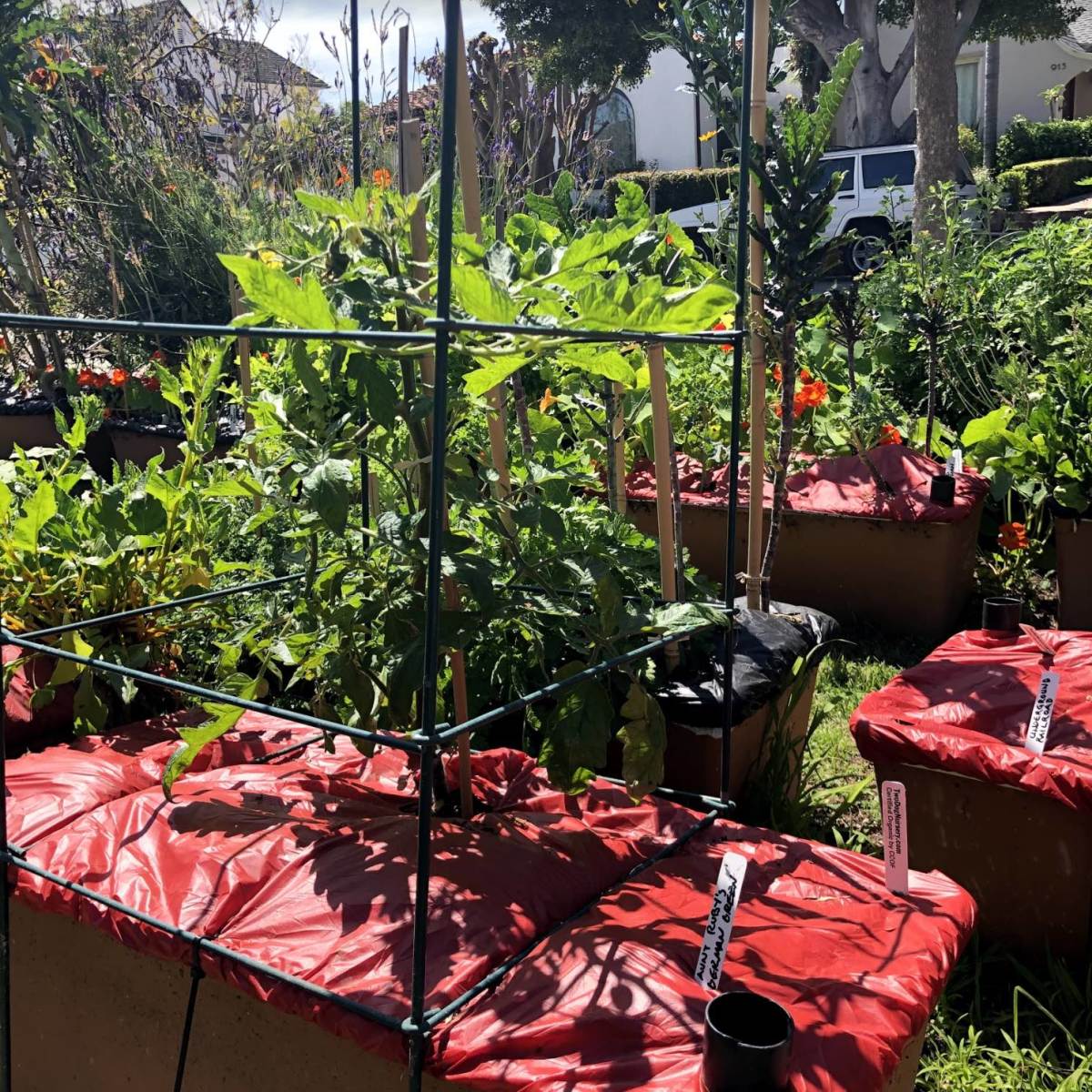
Trigo recommends that urban gardeners with limited space also look toward vertical crops, like squash, beans and some melons. A redwood trellis stuck in your container won’t rot, and will let the vines grow up rather than outward, maximizing efficient use of your space.
Root crops like sweet potatoes, carrots and onions can also be grown in small spaces, and for this Trigo recommends Smart Pot aeration containers. Smart Pots are fabric containers, allowing your plants to “breathe,” but they’re also lightweight and inexpensive. Just be selective about where you place them (the bottom tends to stay wet and can stain hard surfaces).
Finally, small citrus trees can be grown in containers and even kept indoors in colder months. Dwarf lemon, orange, and mandarin trees are good options. “They don’t get bigger than 3-4 feet in height, they’re beautiful, the fragrance of the blossoms is unbelievable, and they fruit every year,” says Trigo.
New urban gardener would benefit most by choosing resilient plants that can withstand your mistakes, ones that fruit plentifully, and that you actually enjoy eating. All of these factors will help retain interest in your new hobby. “The first rule of gardening,” says Trigo, “is grow what you eat and eat what you grow.” Meaning: Don’t bother planting something that you won’t like to eat.
If you get overwhelmed, remember that most garden centers are eager to help, and will coach you through what to buy and how to grow it. You’ll likely need to interface with them anyway, as inventories fluctuate; most ordering requires some back and forth about what you want and what the nursery actually has stocked.
The most important consideration right now: Start in a way that is safe for you, as well as the business and its employees. Take advantage of the new phone and email ordering systems, wear a mask, and wash your hands before receiving your curbside pickup or home delivery.
The classification of nurseries as essential businesses should be used as a way to grow some of your food, reduce trips to the grocery store, and perhaps even relieve some stress, but not as a way to subvert stay-at-home orders and get out in public. “You don’t have to leave your house,” says Gatanas. “You just have to hope your garden center is open.”
from Men's Journal https://ift.tt/2S3MPQk
Comments
Post a Comment